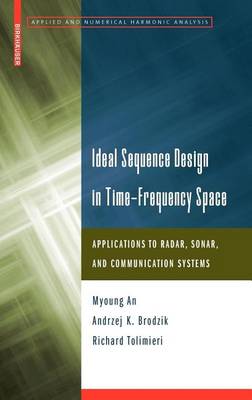Applied and Numerical Harmonic Analysis
3 total works
Ideal Sequence Design in Time-Frequency Space
by Myoung An, Andrzej K. Brodzik, and Richard Tolimieri
This book develops theory and algorithms leading to systematic waveform design in time-frequency space. The key tool employed in the work is the Zak transform, which provides a two-dimensional image for sequences, the Fourier transform, convolution, and correlation, and allows for the design of sequences directly in Zak space. Application areas covered include pulse radars and sonars, multibeam radar and sonar imaging systems, remote dielectric material identification, and code division multiple-access communication systems. This is an excellent reference text for graduate students, researchers, and engineers in radar, sonar, and communication systems.


